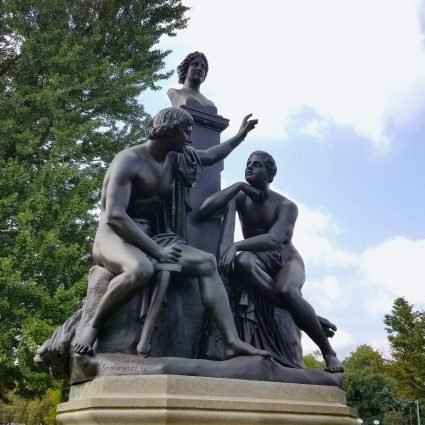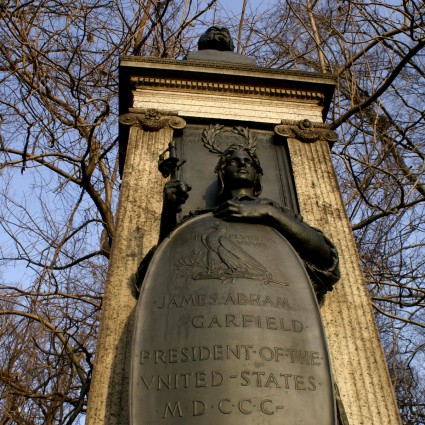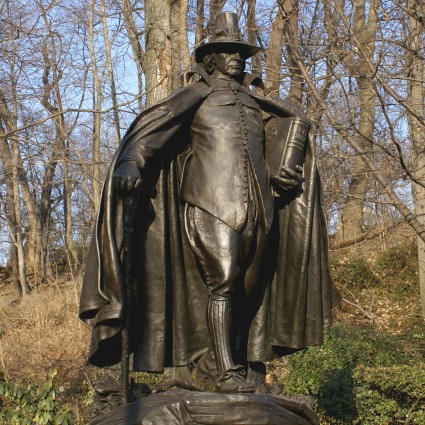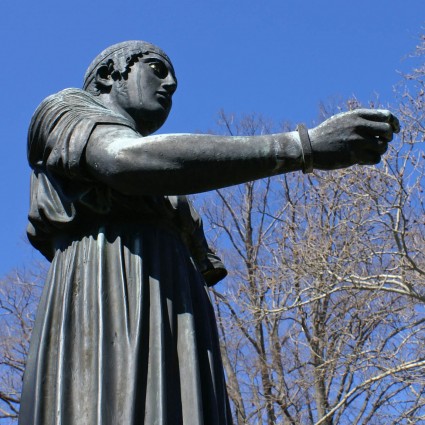At A Glance
Please note that museum admission (fee) is required to view this sculpture
In 1925, Diana was removed from Madison Square Garden’s famous old tower and placed in storage while the Garden gave way to a skyscraper built by the New York Life Insurance Company
She was brought to Philadelphia in 1932, after repairs at the Roman Bronze Works on Long Island for installation in the Great Stair Hall of the Philadelphia Museum of Art
In 1967, when another Madison Square Garden was being built, the Mayor of New York wrote Mayor James Tate of Philadelphia requesting her return to the city, but Mayor Tate refused
The old Madison Square Garden (1892 -1925) in New York was designed by McKim, Mead & White. Saint-Gaudens created Diana as a tribute to his friendship with Stanford White of that firm. This was Saint-Gaudens’s first large-scale nude, his first ideal figure, and the thirteen-foot maiden became the perfect finial for the Garden’s famous old tower. Diana is the Roman goddess of the hunt, and here stands nude, balanced on one foot on a copper ball, with bow and arrow poised to shoot. A flowing cloak, also of sheet copper, which aided in her function as a weathervane, was ripped off in a storm in 1905.
“When no one wanted this poor little orphan, Philadelphia took her in, gave her a palatial home and created a beautiful image for her with a world-wide reputation” – Mayor James Tate
As protectress of the various exhibitions and shows, she spun above the convention group to nominate William Jennings Bryan for President, and, ironically, was a near witness to the shooting of Stanford White by Harry Thaw in 1906 in the rooftop café under her feet. She brought a special quality to New York and was immortalized as a landmark in O. Henry’s story “The Lady Higher Up,” when the author had Bartholdi’s Liberty say to Saint-Gaudens’s Diana “Ye have the best job for a statue in the whole town.”
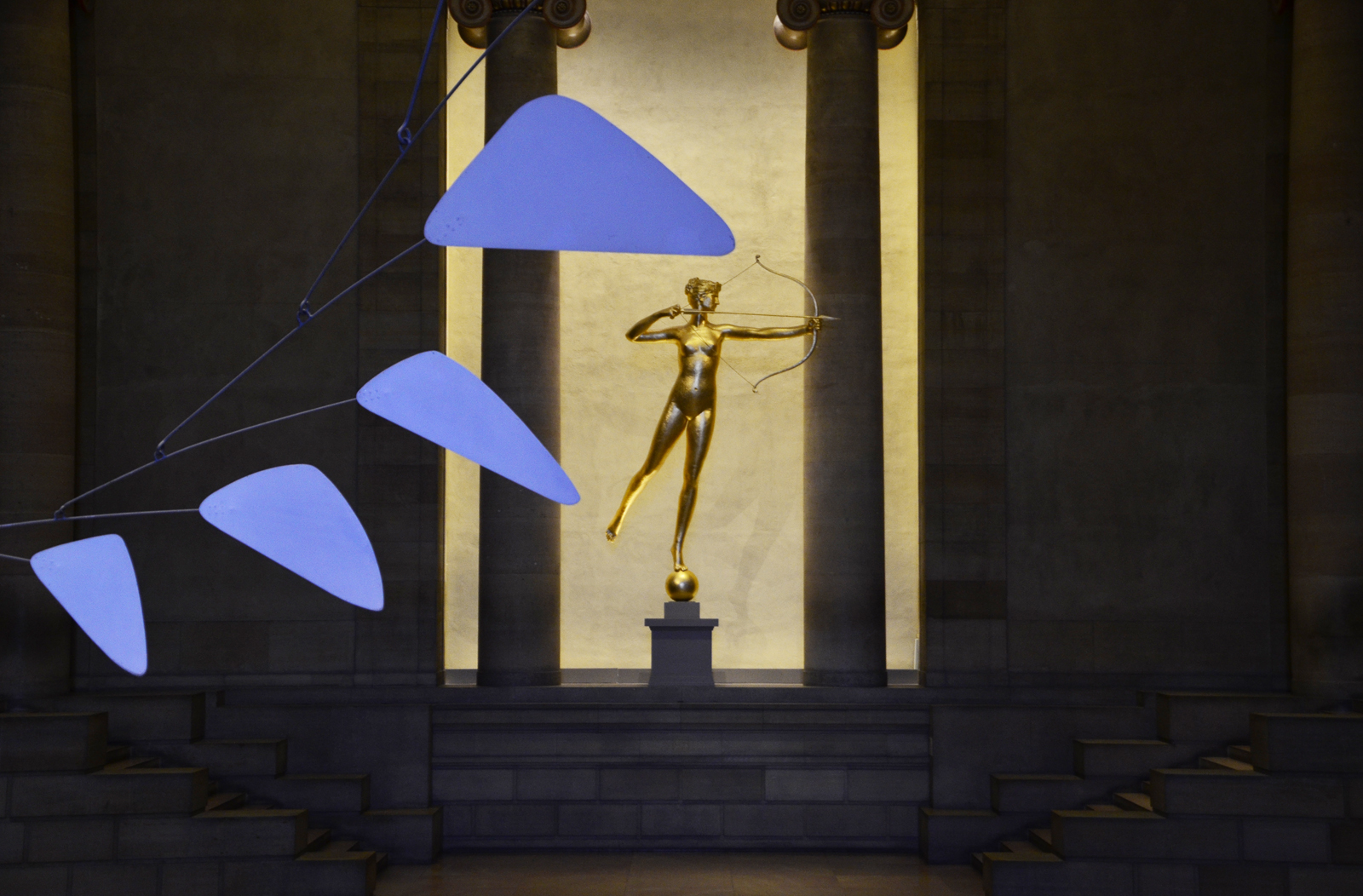
On May 5, 1925, Diana was removed and placed in storage while the Garden gave way to a skyscraper built by the New York Life Insurance Company. Finally, through the efforts of Fiske Kimball, director of the Philadelphia Museum of Art, and funds provided by the Fairmount Park Art Association (now the Association for Public Art), she was brought to Philadelphia in 1932, after repairs at the Roman Bronze Works on Long Island, for installation in the Great Stair Hall of the Philadelphia Museum of Art. The Reverend Mary Hubbert Ellis, a “crusader against pornography,” tried to prevent the entry into the city of a statue that was “brazen, ungarbed and unfit for public view.”
Since then, New York has made attempts to recover Diana. She was requested to attend the World’s Fair in 1939, but declined. In 1967, when another Madison Square Garden was being built, the Mayor of New York wrote Mayor James Tate of Philadelphia requesting her return. Mayor Tate replied: “Would you really want me to believe that you would give Manhattan back to the Indians if they returned the $24 you paid for it? When no one wanted this poor little orphan, Philadelphia took her in, gave her a palatial home and created a beautiful image for her with a world-wide reputation.”
Adapted from Sculpture of a City: Philadelphia’s Treasures in Bronze and Stone by the Fairmount Park Art Association (now the Association for Public Art) (Walker Publishing Co., New York, 1974) and Public Art in Philadelphia by Penny Balkin Bach (Temple University Press, Philadelphia, 1992).
RESOURCES
